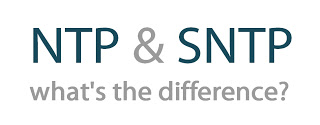Ever wondered what the difference is between NTP and SNTP? Want to know why you should choose one over the other? You’ll find the answers to these, and other questions, right here.
Let’s begin with some clarification. Firstly, you’re eager to know what NTP is, what SNTP is and, you want to know if they’re really that different? Let’s find out…
What is NTP (Network Time Protocol)?
NTP is the standard protocol used for time synchronisation across computer servers, work stations and a plethora of other network devices. It’s primarily used in a client-server capacity, whereby a client requests time from an NTP server & subsequently the server responds.
Tip: Check out this FREE resource.
What is SNTP (Simple Network Time Protocol)?
Cutting through the jargon, SNTP is exactly what the name suggests, a scaled-down version of NTP. SNTP offers a simplified time synchronisation solution for computers with much less processing power. SNTP is commonly used across small network devices such as Digital Video Recorders (DVRs) and internet routers.
The primary reason for opting to utilise SNTP as a time synchronisation solution is that it requires fewer resources to operate. Furthermore, its simplicity and smaller foot-print are also contributors to its widespread use.
If SNTP is in Such Widespread Use Where’s the Disadvantage?
One of the fundamental disadvantages of SNTP is that it can only be configured to function from a solitary time source – usually a computer’s hardware clock or network time reference.
Furthermore, SNTP applications do not assess the stability or quality of time references, with the inclination simply to accept any time-stamp that is provided, rather than taking any precautions to filter out time discrepancies. Without these essential precautions, SNTP applications are often left vulnerable to malicious users as they have no security in place.
Fundamentally, SNTP delivers a significantly lower-quality time sync solution than its NTP counterpart, lacking certain algorithms that ensure total time accuracy. However, in environments where accurate time, reliability and security are not crucial to business operations, or an application is required that utilises fewer resources, SNTP is sufficient.
Why NTP Trumps SNTP
NTP is capable of achieving a much higher level of time accuracy, it’s that simple. Because NTP incorporates much more complex statistical algorithms, and takes precautions by filtering out time discrepancies, it delivers a much more refined time synchronisation solution.
In contrast to SNTP, NTP has numerous security features, most notably authentication which uses the MD5 (message-digest) algorithm. This clarifies the origin of received time-stamps, assuring that data received is not malicious.
Unless there is genuine concern about using more resources and leaving a bigger-footprint, NTP should be the protocol of choice for time synchronisation. There’s simply no better way of achieving extremely accurate time reliably and consistently.
NTP & SNTP – working together
Despite the chasm between what each protocol is capable of achieving, NTP and SNTP are, in fact, interoperable.
Any NTP application can synchronise with an SNTP client and vice versa. This is achievable because the packets of data traded are identical.
A final note
What’s important to understand is that what differentiates NTP and SNTP is not how the information is traded, but what the algorithms do with the information in order to deliver time synchronisation.





